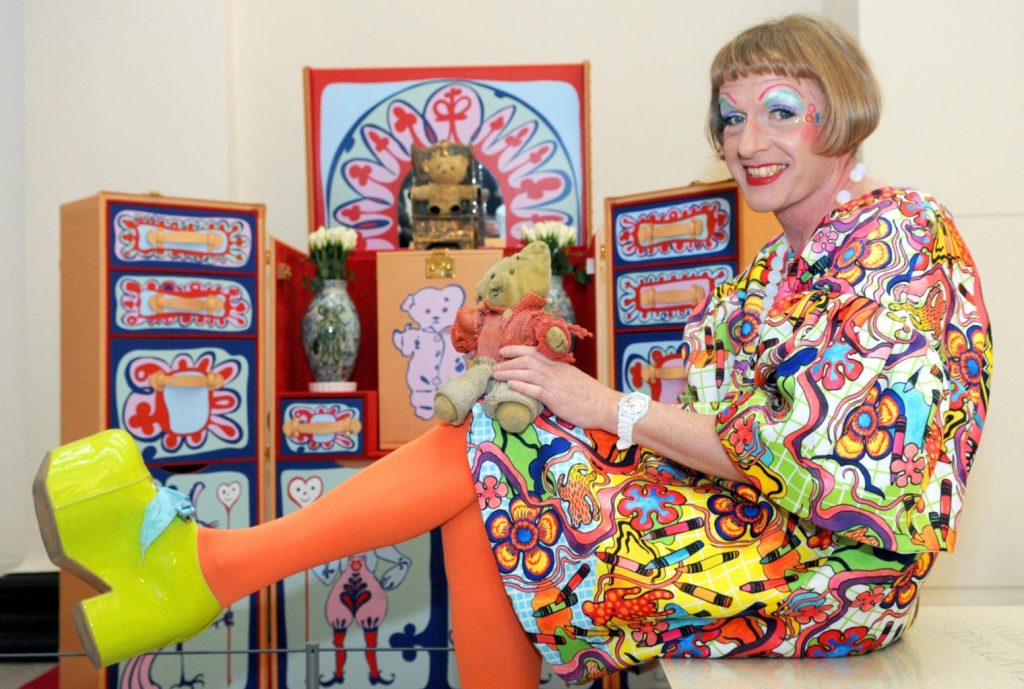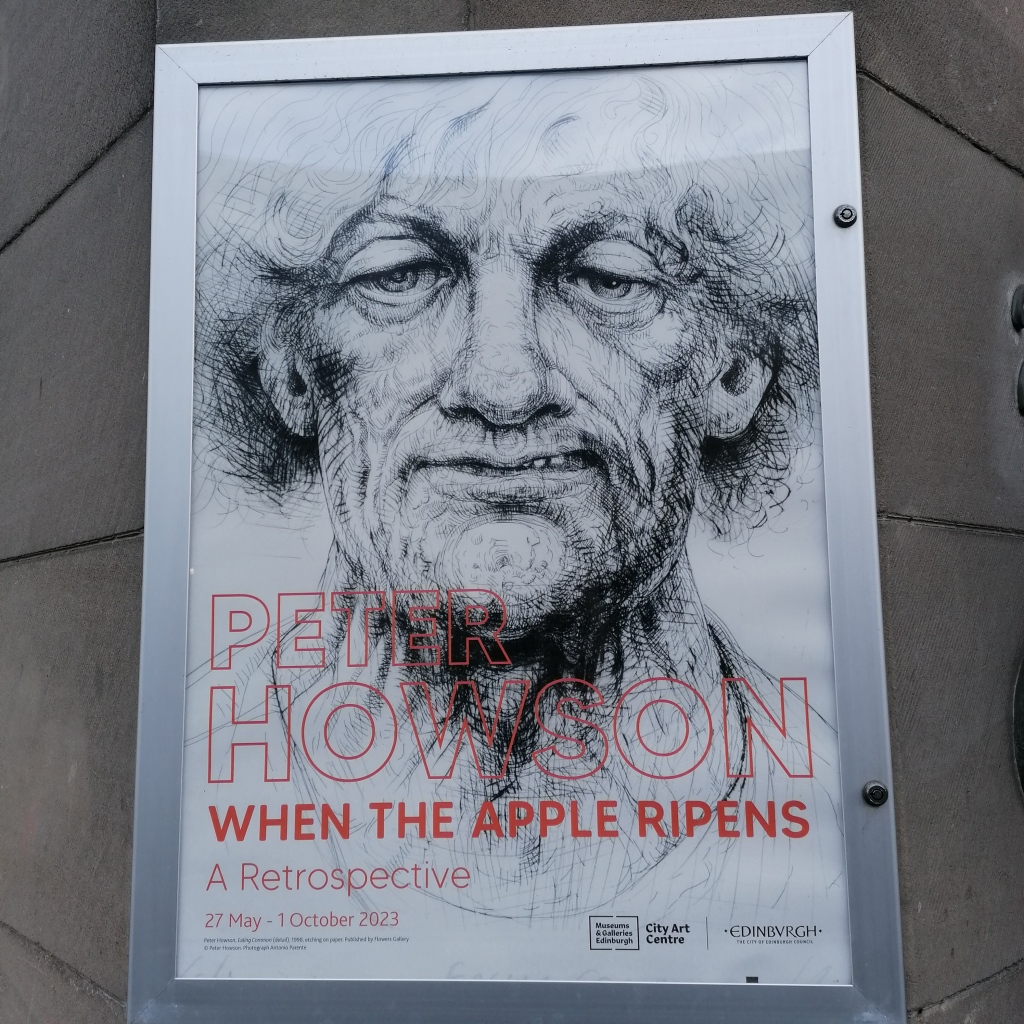
Looking for Christmas present ideas for that special “boy” in your life? How about a remote controlled lawnmower?
Rambler, Writer, Scribbler and now AI fanboy
It is that time of year again where Edinburgh grinds to a halt to make way for what is touted as the biggest arts festival in the world. I took the opportunity last weekend to sneak into the lull before it all kicked off this week and took some photos. It is a pain moving around and trying to do anything “normal” in Edinburgh during August but it is awesome how the city morphs into this behemoth arts beast. So much youth, talent and innocence on display.







July is turning into a my culture month ahead of the festival landing – went to see the Grayson Perry retrospective at the National Galleries of Scotland, Edinburgh yesterday with my mommy.
Putting aside the terrible choice of venue, the National Galleries of Scotland is a beautiful and prestigious institution, but it is not necessarily the best place to show work that is as subversive and challenging as Perry’s. I think the Gallery of Modern Art would have been a more natural home for this exhibition.
In his retrospective at the National Galleries of Scotland (Royal Scottish Academy), Grayson Perry reveals a synthesis of his true self and aspirations. In his artwork, “Reclining Artist,” Perry presents a fantasy version of himself, embracing both masculine and feminine qualities. This 2017 vision is an authentic and captivating work, as he gazes seriously at the viewer, breaking away from his familiar blokey persona.

Perry’s undeniable talent in creating detailed images is apparent, yet some of his works suffer from clutter and symbolism overload. For instance, his childhood teddy bear, Alan Measles, seems to occupy an excessive presence in his art, losing some of its symbolic power over time. Nevertheless, Perry playfully portrays his attachment to Alan Measles, making it a self-aware parody rather than a monomania. Perry is not afraid to experiment and to push the boundaries of what we expect from art. He is constantly trying new things, and sometimes this results in works that are not entirely successful. But even when his work is flawed, it is always thought-provoking and engaging.
The exhibition’s theme revolves around Englishness, but Perry’s meditations on national identity lack the depth of George Orwell’s analyses. Despite this, his artwork, “Comfort Blanket,” humorously highlights some aspects of inclusive Englishness, which may resonate with Brexiteers too.
While Perry’s understanding of the English middle class is evident, some of his works lack passion and courage, leaning towards flippancy and satire. Despite his prolific career, he occasionally veers into the territory of whimsy and empty quotation. Nevertheless, Perry has become popular and beloved by sharing the English middle class’s ambivalence towards art, appealing to the national prejudice against those who take themselves too seriously.
In conclusion, Grayson Perry’s art embodies a blend of whimsy and satire, reflecting his exploration of ‘identity’ and Englishness. While some of his works may be perceived as lacking depth, they resonate with audiences who appreciate his humorous and self-conscious approach. As an artist, Perry’s journey continues to provoke thought and laughter, making him a distinctive figure in modern British art.
“It’s not like learning to play the violin, where you can be demonstrably talented at a young age. With art, you really need to find your own voice and that takes a while. Actually, it’s a marathon – and if you are eventually original, you’re lucky.”
Grayson Perry
I went to see the Peter Howson exhibition at the weekend with my mum. Little disappointed but great to see his work “in person” and a get a feel for its scale.
The early work section features some of Howson’s most famous paintings, such as “The Butcher Boy” and “The Crucifixion of the Dog.” These paintings are powerful and disturbing, but they are also incredibly beautiful. They offer a unique and often unsettling glimpse into Howson’s world.
However the religious works did nothing for me – better stuff by better artists at the mound if you want religious nonsense.

The Bosnia section features Howson’s paintings from the 1990s, when he was war artist in Bosnia. I have vivid memories of them as it was the same year Jay was born. These paintings are some of the most powerful and disturbing work that Howson has ever produced. They offer a raw and unfiltered look at the horrors of war. Yet it felt a little tame – like they chose the least offensive (triggering) images – and I would have liked to see more of his sketches of that period. It was a brutal war that Europe just let happen, with no intervention, and exposed the UN as the useless organisation it is. It affected Mr Howson deeply and after watching the videos and reading his commentary it comes across as if he went through 20 years of art therapy and swapped one addiction for a religious one.
No hooligans either which was a giant disappointment as they were my favourite pieces by Howson.
As poster states – on until 10 October @ the City Arts Centre. Overall, the Peter Howson exhibition at the City Arts Centre is a must-see for anyone interested in Scottish art. It is a powerful and moving exhibition that offers a unique glimpse into the mind of one of Scotland’s most important artists.
So have been learning to use Unity recently, which is an awesome program but a little complicated for what I have been trying to do. But I came across this wonderful start-up developing a Augmented/Mixed Reality platform called Zap Works. It makes the whole process of creation very easy and linking up stored files with the Zappar (think QR code) app on a mobile is straight forward and works seamlessly. For the simpler stuff I will be using this rather than Unity I think.
whether it is through Google Glasses, Magic Leap, ORA-X or a microchipped contact lens – the world will start to have a digital overlay starting this year – think Pokemon Go without having to point your phone.
I particularly like the idea of the “guide animal” steering you along your journey – mashing Indian/Aboriginal dream guides with modern tech. Love it.
new job with lots of commuting time so romping through a few books, latest is “weapons of math destruction” – showing the role that mathematical modeling now plays in society, with examples of how Big Data and complex algorithms actually effect us in practice, like
The end chapter is on Facebook and the way political interests are taking advantage of the detailed information it provides to target their messages, to the detriment of democracy and reality.
Facebook is the most worrisome of all the Big Data concerns in the book. It exercises an incredible amount of influence over what information people see, with this influence sometimes being sold to the highest bidder. Together with Amazon, Google and Apple, our economy and society have become controlled by monopolies who also monitor our every move. In the context of government surveillance, Edward Snowden remarked that we are now “tagged animals, the primary difference being that we paid for the tags and they’re in our pockets.” A very small number of huge extremely wealthy corporations have even greater access to those tags than the government does, recording every movement, communication, and even every train of thought as we interact with the web.
The Silk Roads is a fascinating read, written with flair and the result of serious scholarship, it inverts received wisdom and charts mankind’s flirtation with global disaster. It feels like history has been distorted to fit the western agenda’s and the real terrorists are European by decent and claim that ‘freedom’ is the reason they oppress the rest of the world.
If you want to understand why the world has ended up where it is, then just reading the conclusion will help you understand.